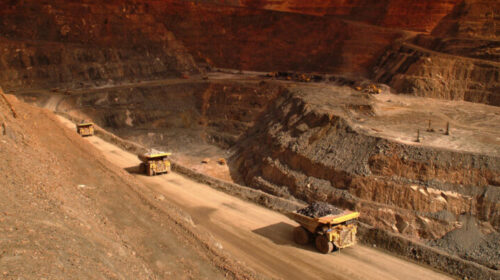Falling Cobalt Prices Force DRC Artisanal Miners to Shift to Less Profitable Copper
Cobalt prices have plummeted over the last three years, dropping by two-thirds—a severe blow for the Democratic Republic of Congo (DRC), the world’s leading cobalt producer with the largest global reserves.
This price slump has forced many artisanal miners to abandon cobalt mining, with some turning to copper despite its limited profitability.
In Kolwezi’s Kamilombe artisanal mine, under a corrugated shed, 39-year-old miner Guelord Kongolo prepares raw cobalt for sale.
“The activity here has slowed down; it’s not like it used to be,” says Kongolo, who supports four children. Faced with cobalt’s declining value, he has turned to copper to survive, though the returns are minimal. “We earn just crumbs with copper,” he adds.
The price of cobalt has plunged from over $80,000 per ton in early 2022 to around $23,945 per ton. The DRC, which supplies over 70% of global cobalt exports, relies heavily on this mineral, essential for battery production in electric vehicles and renewable energy storage.
At the Kamilombe site, traders gather near bags of cobalt and copper prepared for sale, while thousands of miners have left the trade since prices began to fall.
Site manager Serge Kamwanayumba reports that the number of miners under his supervision has dropped from 21,000 to 15,000 since 2022.
Nearby, women process copper in artificial ponds, hoping to earn enough to meet basic needs. “Cobalt paid for our children’s education and daily expenses,” says Charlotte Muyombe, a mother of three. “But copper doesn’t cover school fees, and my children haven’t studied this year.”
Congolese mining expert Jean-Pierre Okenda attributes cobalt’s price drop partly to a renegotiation of the Tenke Fungurume (TFM) mine contract between state-owned Gécamines and China’s CMOC, which holds an 80% stake in TFM.
A nearly year-long export ban during negotiations led to stockpiling, and once lifted, cobalt flooded the market, driving prices down.
The effects of falling cobalt prices extend beyond miners to the DRC government, which collects royalties from mining operations. “Everyone’s income is impacted by the cobalt price drop,” says local civil society leader Donat Kambolalenge, who criticizes the government’s inability to regulate the copper and cobalt markets.
To better control artisanal mining, the government formed a Gécamines subsidiary, Entreprise Générale du Cobalt (EGC), but illegal mining on concessioned land remains difficult to manage.
In early October, mining stakeholders gathered in Kolwezi for the Alternative Mining Indaba, where discussions centered on processing minerals locally to retain more value.
“Local processing would bring greater returns. For cobalt, we could even manufacture batteries,” explains Jean-Marie Kanda of the Congolese Battery Council.
The DRC could raise cobalt prices by restricting exports, but only with cooperation from mining companies. “If export quotas are imposed, prices could rebound,” says John Kanyoni, a national representative of the artisanal mining commission at the Federation of Congolese Enterprises.
The next few years will be crucial for the DRC as it navigates cobalt market challenges while seeking to advance local processing initiatives and stabilize incomes for its miners.
SOURCE:Batterymetalsafrica.com
166 total views , 1 views today





